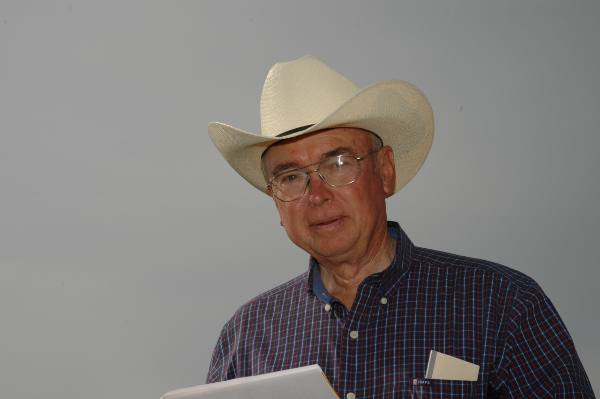
Famers and industry observers who gathered at the Wilde farm near San Angelo for the annual cotton variety trial field day recently enjoyed a respite from the relentless heat that has scorched Texas all summer. They looked hopefully to overcast skies thinking maybe they could get a bit of rain during the event, but they expressed little enthusiasm for the 2011 crop.
“Even our irrigated acreage will be off by 50 percent,” said Rick Minzenmayer, Texas AgriLife Extension integrated pest management specialist for the area. “Dryland cotton is gone.
“Farmers are hoping for 750 to 1,000 pounds per acre from irrigated cotton,” he said. “It’s likely to be more like 750. Typically, we make three bales per acre on irrigated fields.”
“We had some seed that simply wouldn’t push through the soil,” said John Wilde, who farms here with his two sons. He said water availability made the difference with irrigation.
“Vigor was so low on some plants that growers couldn’t get a stand,” Minzenmayer said. “A lot of cotton never germinated. We got a little rain about a month ago and some cotton came up.”
“We’ll make about half our usual irrigated crop,” said Doug Wilde. “We kept backing off irrigated acreage all summer. We backed off to what we could irrigate effectively.”
He said their dryland crop made nothing.
Gary Schwarzlose, a technical services representative with Bayer CropScience, said crop conditions in part of his territory “were not as bad as in some areas. Yields around Corpus Christi are pretty good. Farmers have been surprised. Some producers who were expecting to make one-fourth to one-half-a-bale per acre, made one-half to a bale. Timely rainfall made the difference.”
He said some spots in the Lower Rio Grande Valley did well. “Irrigated cotton made good yields.”
The situation up the coast was not as good. “From Victoria up toward Houston was hit hard (by drought). They had trouble getting a stand and just never got rain.”
Kevin Cavanaugh, with Americot, said it has been a tough year for Central Texas cotton. “All that’s left is irrigated cotton and conditions depend on water availability. Some farmers ran out of water. Even drip irrigation was off.”
Cavanaugh said the combination of prolonged drought and intense heat presented insurmountable obstacles even to farmers with irrigation.
“We had close to 100 days with 100-degree temperatures,” he said.
Jearl Holland, Deltapine, said dryland cotton in the Southern Rolling Plains was “non-existent. A lot of us believe that crop estimates for Texas are overstated. Even irrigated acreage will not make what it typically does. And it’s going to be hard for some farmers with irrigation to make a profit because they had to spend so much money on it.”
He said two-and-a-half to four-bale cotton is a usual benchmark for irrigated acreage in the area. “I think we’ll see a lot of one-bale cotton and maybe a little two-bale-per-acre yields where growers caught a shower.
“Some farmers abandoned irrigated acres because they simply couldn’t keep up with water demand.”
Holland said he’s been working in the seed business since 1985, and he’s never seen a year as bad as this one has been. “My father started in the seed business in 1960, and he’s never seen anything like this either. It’s unprecedented. June, July and August all set records for hottest months.”
About the Author(s)
You May Also Like






